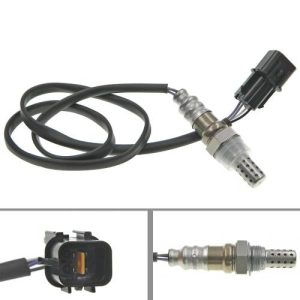Your cart is currently empty!
DIY Oxygen Sensor Inspection & Cleaning
DIY Oxygen Sensor Inspection & Cleaning: Save $800 with This Pro Mechanic's Guide
5-Step Oxygen Sensor Diagnostic Protocol
When experiencing 15% fuel economy drops or sulfur-smelling exhaust, perform these oxygen sensor inspection steps:
- OBD-II Diagnostic Scan: Check for P0130-P0175 codes using a code reader
- Visual Examination:
- Light gray tip: Normal condition
- White crystalline deposits: Silicon contamination
- Black soot: Cleanable carbon buildup
- Electrical Testing: Multimeter check heater circuit (4-40Ω) and signal voltage (0.1-0.9V fluctuations)
- Live Data Verification: Monitor pre-cat sensor switching rate (>8 cycles/10 seconds at operating temp)

Professional-Grade Oxygen Sensor Cleaning Method
Required tools: 22mm oxygen sensor socket, nitrile gloves, glass container (500ml+ capacity)
Stage 1: Safe Removal
Disconnect battery negative terminal. Use oxygen sensor socket to remove unit (cold engine only)
Stage 2: Preliminary Cleaning
Spray carburetor cleaner from 6" distance to remove surface deposits
Stage 3: Deep Cleaning Solutions
Select treatment based on contamination type:
| Contamination | Solution | Duration |
|---|---|---|
| Carbon deposits | 10% ferric chloride + HCl mix | 15 mins |
| Oil residue | Commercial sensor cleaner | 30 mins |
| Light coating | Premium gasoline soak | 8 hours |
Stage 4: Precision Treatment
Gently brush ceramic element with nylon brush. Bake at 200°C for 20 minutes to remove moisture
Stage 5: Reinstallation Best Practices
Apply copper-based anti-seize compound to threads. Torque to 28 N·m (21 ft-lb) using click-type wrench
Stage 6: Post-Cleaning Verification
Road test for 20 minutes while monitoring:
- Short-term fuel trim (±10% range)
- Downstream sensor voltage (0.6-0.8V stability)
Critical Safety Precautions
⚠️ Prohibited Actions:
- Avoid oxalic acid - corrodes platinum electrodes
- Never submerge electrical connectors in cleaner
- Replace damaged sealing washers immediately
Expert Maintenance Recommendations
- Use fuel system cleaner every 30k miles (e.g., Chevron Techron)
- Replacement intervals: Turbo engines 80k mi/NA engines 100k mi
References:
1. SAE J1979 Diagnostic Standards
2. NGK NTK Technical Bulletin 2024-07
3. AAA Auto Repair Cost Survey 2024

Leave a Reply